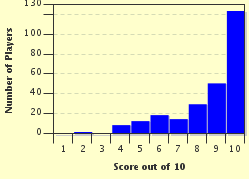Quiz Answer Key and Fun Facts
1. Erosion of the native Navajo sandstone has resulted in the formation of the spectacular Antelope Canyon. In which American state would you find this natural wonder which is a photographer's delight?
2. Staying within the United States of America, the next attraction is man-made and was designated as one of the Wonders of the Modern World by the American Society of Civil Engineers. While the name of this structure references another colour, the red lead primer used to coat it ensures that I see red when I look at it. Where am I?
3. The next photo depicts possibly the most famous monolith in the world. Which country am I visiting?
4. The fort shown in the picture was built out of locally available sandstone and is unsurprisingly called the Red Fort. The Prime Minister of the country where it is located delivers an annual Independence Day speech from its ramparts. Which Asian capital is home to this structure?
5. Travelling north, I now find myself in a large square facing the entrance of a former imperial palace called the Forbidden City. Which city am I in?
6. Appropriately named for this quiz, where on earth would you find the Red Square located near a fortified complex called the Kremlin?
7. This ancient city nicknamed the Rose City due to the colour of the sandstone rocks was lost to the rest of the world till its discovery by Swiss explorer Johann Ludwig Burckhardt in 1812. Where on earth are we now?
8. This coastal desert along the Atlantic Ocean is probably one of the oldest deserts in the world. With a name meaning 'vast place' in the Nama language, where on earth would you find this?
9. The massive rock cut temples of Abu Simbel were completely relocated to higher ground when the Aswan High dam was being constructed. Which country houses this wonder?
10. Regarded as the birthplace of the Renaissance, the skyline of this city is marked by the distinctive dome of the Cattedrale di Santa Maria del Fiore built by Brunelleschi, one of the founding members of the movement. Which Italian city would you need to visit to feast your eyes on this architectural and engineering marvel?
Source: Author
zorba_scank
This quiz was reviewed by FunTrivia editor
Tizzabelle before going online.
Any errors found in FunTrivia content are routinely corrected through our feedback system.


